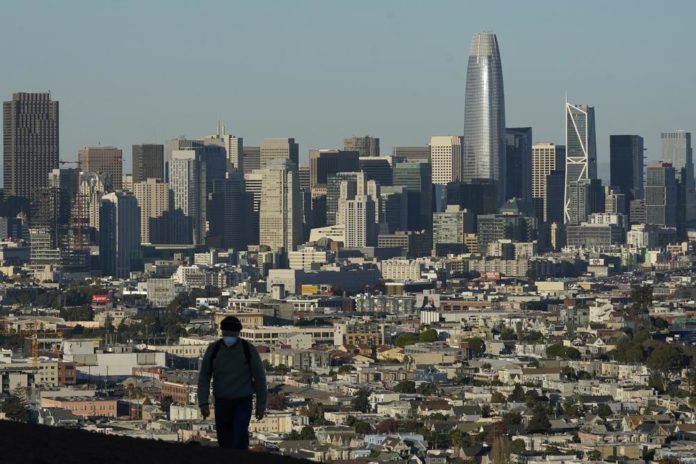
SACRAMENTO, Calif. (AP) — The nation’s most populous state is shrinking.
California’s population declined again in 2021 for the second consecutive year, state officials said Monday, the result of a slowdown in births and immigration coupled with an increase in deaths and people leaving the state.
With an estimated 39,185,605 residents, California is still the U.S.’s most populous state, putting it far ahead of second-place Texas with 29.5 million residents. But after years of strong growth brought California tantalizingly close to the 40 million milestone, the state’s population is now roughly back to where it was in 2016 after declining by 117,552 people this year.
That changed in 2020, when the pandemic killed tens of thousands of people above what would be expected from natural causes, a category demographers refer to as “excess deaths.” And it prompted a sharp decline in international immigration because of travel restrictions and limited visas from the federal government.
California’s population fell for the first time that year, the first decline ever recorded. At the time, state officials thought it was a outlier, the result of a pandemic that turned the world upside down. But the new estimates released Monday by the California Department of Finance showed the trend continued in 2021, although the decline was less than it had been in 2020.
State officials pointed specifically to losses in international immigration. California gained 43,300 residents from other countries in 2021. But that was well below the annual average of 140,000 that was common before the pandemic.
“I don’t know if I’m surprised by it,” said Walter Schwarm, California’s chief demographer. “It takes awhile for the machinery of government and others to get back to normal.”
But critics point to the steady stream of people leaving California as an indictment on the state’s policies, which are set by Democrats in the governor’s office and the state Legislature. About 280,000 more people left California for other states than moved here in 2021, continuing a decades-long trend.
“It’s not because we no longer have good weather,” quipped Republican Assemblymember Kevin Kiley, who is running for Congress this year after failing to unseat Gov. Gavin Newsom in last year’s recall election.
Impacts of the decline have already been felt, as California lost a seat in Congress for the first time after the U.S. Census showed it did not grow as fast as other states. But the decline hasn’t impacted the state’s bottom line. California had a record budget surplus last year, and is in line for an even larger one this year of as much as $68 billion — mostly the result of a progressive tax structure and a disproportionate population of billionaires.
Things are also changing within California as record-high housing prices are forcing people to flee the picturesque population centers of the coast for the relatively cheaper havens of the Inland Empire and the vast Central Valley.
All but three of California’s coastal counties lost population in 2021 — including the Southern California behemoths of Los Angeles, Orange and San Diego — while inland counties saw steady growth as the statewide median price of existing single-family homes hit a record high of $849,080 in March, a 2.6% increase over the previous record set in August.
Of the state’s 10 largest cities, half of them lost population: Los Angeles, San Francisco, Sacramento, Oakland and Anaheim. San Diego, the state’s second most populous city behind Los Angeles, grew slightly by 2,958 people, or 0.2%.
Source: VosIzNeias